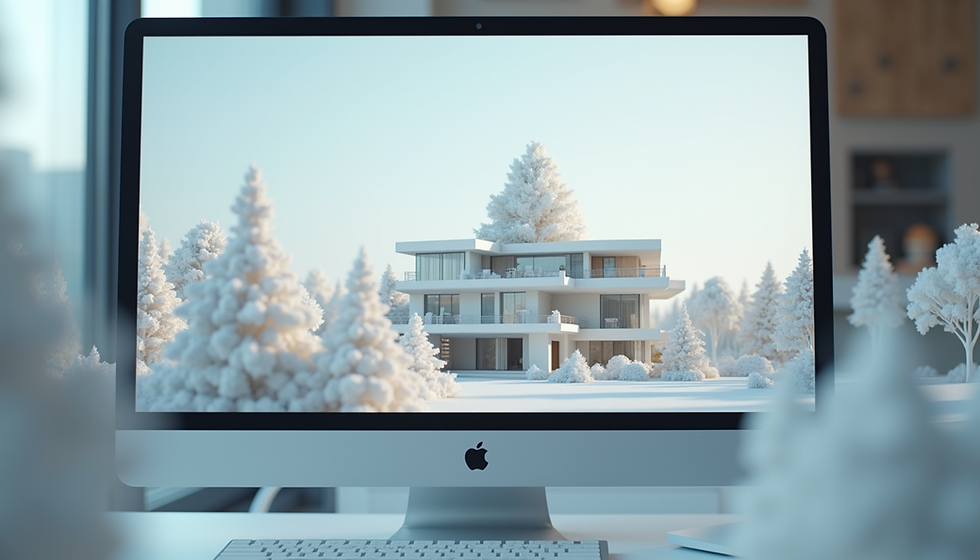There are only 2 types of Architects - Traditional or Tech-Driven!
- Survey Team
- Aug 31, 2023
- 3 min read
Picture a mix of old-school sketches and laser-powered precision – it's like blending creativity and science. We're digging deep into whether laser scanning is a game-changer or just a flashy extra. Find out what sparks Architects designs, how they spot the best surveyors, and what the future holds for measuring.
No fancy blueprints, just real talk about how architects mix tech and tradition. It's like peeking behind the curtain of their design magic!
In the world of architecture, the role of technology and surveying methods is constantly debated. So I done an actual research and here are my findings, I will unravel architects' perspectives on these matters, engaging them in discussions about cost efficiency, precision, and the future of manual measurement and how the Technology would save there time & energy.
Question 1: Is Hand Sketching and Laser distance measurer (DISTO), the Optimal
Combo?
Mahir: "It varies. For straightforward projects, we opt for hand sketching and laser Disto, as it's cost-effective and suits the client's budget. However, with complex sites, we lean on laser scanning for accuracy."
Matthew: "Laser scanning by professional surveyors is our go-to. Hand sketching and laser Disto aren't the quickest route for us due to the intricacies of our projects."
Hamish: "I utilize a Disto laser measure, although not the latest version. It has its place, but for more comprehensive data, laser scanning takes precedence."
Constantine: "I employ a mix of tools, including the 'level hose gauge set.'
Still prefer to get to know the properties and do site surveys my self but I am looking for ways and a tool to simplify this, and I see that AI could simplify this process.

Colin: "I still prefer the hands-on approach. Understanding the building personally helps me prioritize details that matter. Until there's a streamlined workflow for converting scans into my preferred software, I'll stick to manual surveys."
Question 2: Laser Scanning in Measured Surveys is this a necessity?
Mahir: "The importance depends on the scale and complexity. Liability is a key factor in the decision-making process."
Matthew: "Laser scanning is a must-have for us. It ensures accurate measurements and a solid foundation for our designs."
Hamish: "Laser scanning adds depth to surveys."
Constantine: "I've explored various methods but struggled to find a solution that fits. Automatically created clear polylines in DWG format from scan data would be a game-changer."
Colin: "I'm open to a better way, but for now, translating scans into my 3D model remains a significant undertaking."
Question 3: What are the Traits of Outstanding House Surveyors?
Matthew: "The ability to segregate elements into layers, no parallel lines, and meticulous note-taking sets great surveyors apart."
Hamish: "Attention to detail, efficient work, precise survey notes, and a deep understanding of building materials define excellence."
Question 4: What is the Future for Surveying Methods?
Mahir: "Advancing technology will shape our approach. However, personal understanding of buildings will still hold value."
Hamish: "Given the technology's progress, I'd still go for manual measurements unless an efficient conversion method emerges."
Colin: "If you can prove a better way to convert scan data into a usable model, I'm all ears."
These architects' insights offer a glimpse into the complexities of surveying methods, bridging the gap between traditional approaches and the allure of cutting-edge technology. As the architectural landscape continues to evolve, it's evident that the balance between precision and practicality remains a constant consideration.
"I hope this research was useful. If you'd like to share your opinions or comments, I am currently seeking architects for interviews. These insights can assist others in the industry to grasp the current situation. Plus, it's a chance for you to shine as an industry expert, setting you apart from the crowd. This opportunity offers both free marketing for your company and personal branding.










Comments